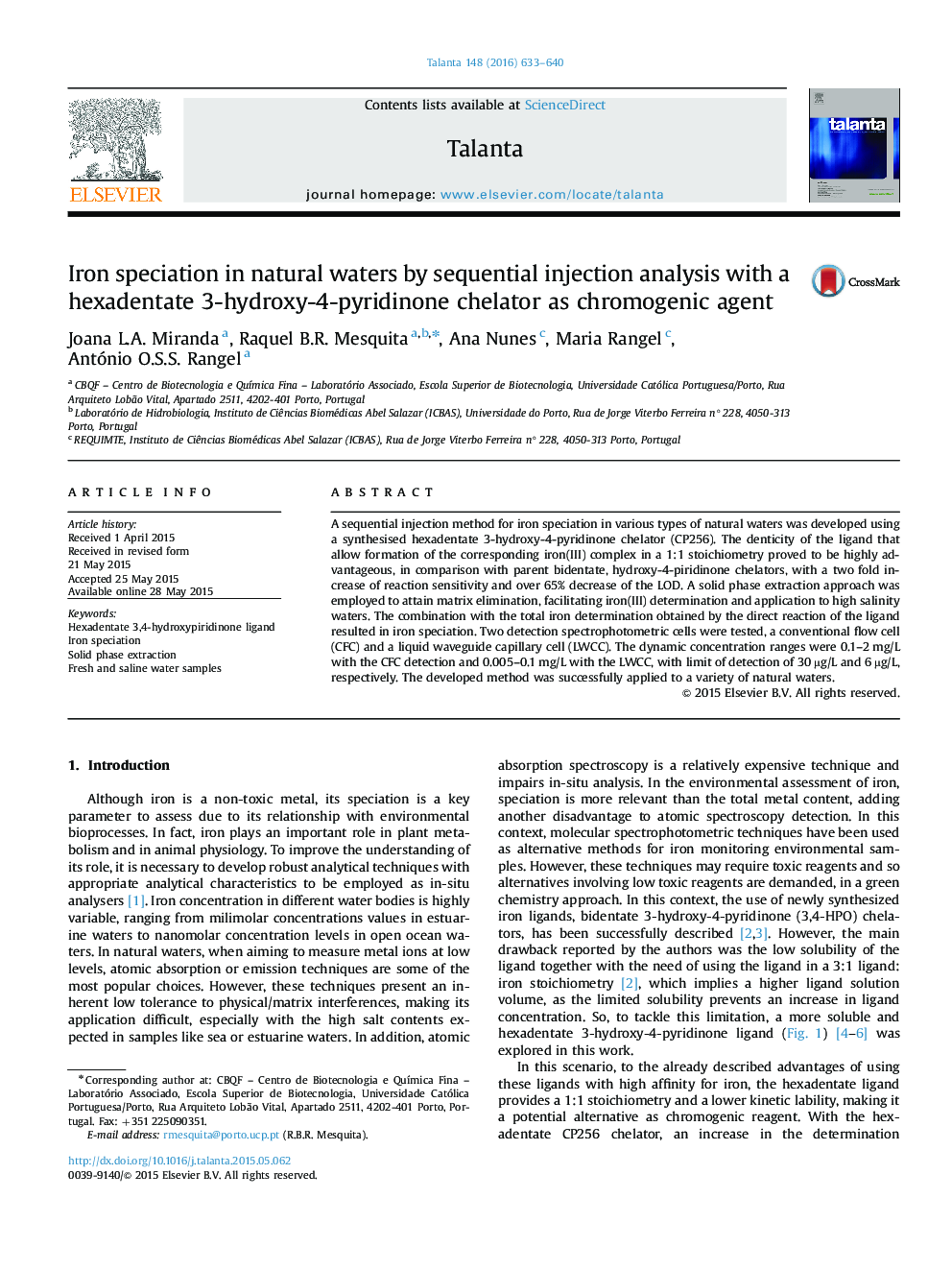| Article ID | Journal | Published Year | Pages | File Type |
|---|---|---|---|---|
| 1243829 | Talanta | 2016 | 8 Pages |
•Use of hexadentate 3,4-hydroxypiridinone ligand as low toxicity chromogenic reagent.•Iron speciation with highly sensitive colorimetric reaction and detection system.•Solid phase extraction for iron(III) retention and matrix elimination.•Application to both fresh and saline waters.
A sequential injection method for iron speciation in various types of natural waters was developed using a synthesised hexadentate 3-hydroxy-4-pyridinone chelator (CP256). The denticity of the ligand that allow formation of the corresponding iron(III) complex in a 1:1 stoichiometry proved to be highly advantageous, in comparison with parent bidentate, hydroxy-4-piridinone chelators, with a two fold increase of reaction sensitivity and over 65% decrease of the LOD. A solid phase extraction approach was employed to attain matrix elimination, facilitating iron(III) determination and application to high salinity waters. The combination with the total iron determination obtained by the direct reaction of the ligand resulted in iron speciation. Two detection spectrophotometric cells were tested, a conventional flow cell (CFC) and a liquid waveguide capillary cell (LWCC). The dynamic concentration ranges were 0.1–2 mg/L with the CFC detection and 0.005–0.1 mg/L with the LWCC, with limit of detection of 30 µg/L and 6 µg/L, respectively. The developed method was successfully applied to a variety of natural waters.
Graphical abstractFigure optionsDownload full-size imageDownload as PowerPoint slide
